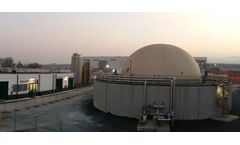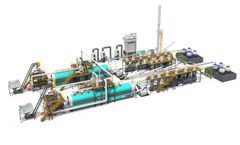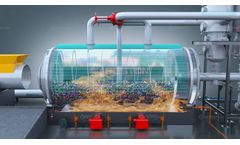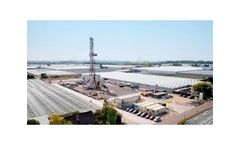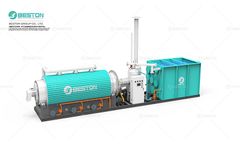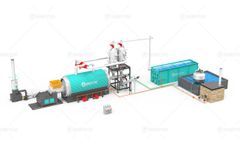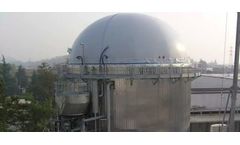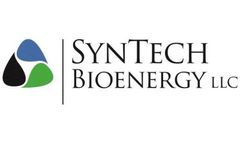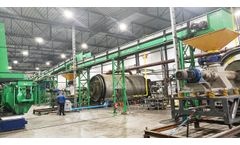To Generate Energy From Waste Articles & Analysis: Older
183 articles found
Critical considerations for anaerobic digestion projects In the field of industrial wastewater treatment, anaerobic digestion is a powerful process that transforms waste into valuable by-products. Most notably, it produces renewable energy in the form of biogas, which can be used to fuel operations, cogenerate electricity, or even be sold. Another valuable by-product of the process is digestate, ...
Pyrolysis is a thermal decomposition process that breaks down organic materials, such as plastic, rubber, and biomass, in the absence of oxygen. This process has gained significant attention for its potential in waste management and resource recovery, offering an effective way to convert waste into valuable products like fuel, gas, and biochar. A key question that often arises is whether ...
Well-insulated reactors and advanced heat recovery systems help minimize energy waste. By efficiently recycling heat within the system, the reactor can operate with reduced external energy input, leading to significant cost savings in the long run. ...
Situation Most people know HVC as a waste-to-energy plant or waste company. However, the fact that HVC is also active in generating renewable energy from green gas, solar parks and geothermal energy is much less known. In the Westland region, the soil is extremely suitable for ...
The mini pyrolysis plant represents a significant opportunity for investors looking to enter the waste-to-energy sector. By converting waste materials such as plastics, tires, and biomass into valuable by-products, mini pyrolysis plants offer a sustainable solution to waste management while generating potential ...
The pursuit of sustainable energy sources has intensified as the world grapples with the dual challenges of waste management and energy security. ...
Centrifugal pumps are widely used in the Industry. Pumps are one of the major contributors to energy consumption and plant breakdown occurrences. Pump operators usually face the following two challenges with centrifugal pumps: Poor Efficiency Poor Reliability The solution to the above two problems is simple – Operate the pumps at or near their best efficiency point. Even though this ...
Feedstocks with high inherent value, such as waste electronic devices or specific types of plastics, can yield products with greater market demand and consequently, higher profit margins. ...
The evolution from batch to continuous pyrolysis plants marks a transformative leap in waste management technology, redefining efficiency and sustainability standards. The superiority of the continuous pyrolysis plant over its batch counterpart is manifest in its seamless, uninterrupted operation. Unlike batch systems, which operate in discrete cycles, continuous pyrolysis plants maintain a ...
The process transforms tires into valuable energy resources, minimizing the need for fossil fuels and promoting a circular economy approach to waste management.Resource Recovery Tyre pyrolysis enables the recovery of valuable resources from end-of-life tires, including fuel oil, carbon black, and gas. ...
HELECTOR, a subsidiary of ELLAKTOR Group, is an expert in the waste management and green energy production sector in South Eastern Europe. To further their commitment to alternative fuel production and biomass exploitation, HELECTOR selected Clarke Energy Hellas to supply and install a 3.52MW landfill gas power plant in Thessaloniki, ...
This expedited timeline enables faster project implementation and revenue generation, enhancing the economic viability of waste-to-energy initiatives. ...
With its advanced pyrolysis technology, the Mini Pyrolysis Machine offers numerous benefits, from reducing landfill waste to generating income from recyclable materials. ...
In the quest for sustainable energy solutions, plastic to fuel machines emerge as a promising avenue, harnessing the power of pyrolysis to transform discarded plastics into usable energy. Pyrolysis, a thermal decomposition process in the absence of oxygen, offers a pathway to convert non-recyclable plastics into valuable resources. Plastics, ubiquitous in modern life, pose a significant ...
The use of plastics in LED technology has revolutionized the lighting industry, leading to substantial energy savings and reduced electricity costs. Another area where plastics contribute to energy efficiency is in renewable energy generation. ...
ByAntecs
EFC reactors bring many advantages for treating high COD wastewater The external forced circulation (EFC) reactor is a type of anaerobic digester developed by Fluence that is particularly suited for the treatment of high soluble COD wastewater streams like those of: Paper and pulp manufacturing Livestock operations and slaughterhouses Meat and seafood processing and packaging Confectionary ...
Army that proved the BioMax® system could convert dry packaging materials from mobile kitchens to utility grade electricity using a standard Army, diesel fueled, 60 kWe Tactical Quiet Generator (TQG). Under Subsequent SBIR projects with the Army, CPC has continued to upgrade the BioMax® Waste-to-Energy (WEC) system to ...
By converting organic waste into a valuable resource, communities can optimize waste management practices while potentially generating revenue from the sale of biochar.Job Creation and Local Empowerment Deploying such equipment on a mobile scale not only streamlines waste conversion but also creates job ...
In the dynamic landscape of waste management and resource recovery, the choice between a continuous pyrolysis plant and a batch pyrolysis plant becomes a pivotal decision. Each approach carries its unique set of advantages and intricacies. This article delves into the heart of these technologies, unraveling the nuances that distinguish them in the pursuit of sustainable waste-to-energy solutions. ...
By converting palm waste into green fuel, industries can reduce their dependence on traditional energy sources, potentially lowering operational costs. ...

